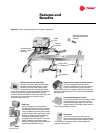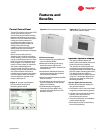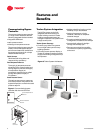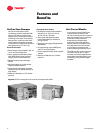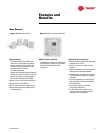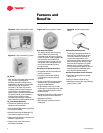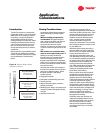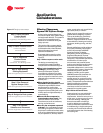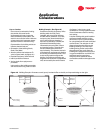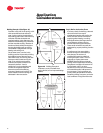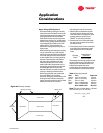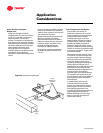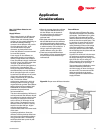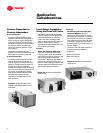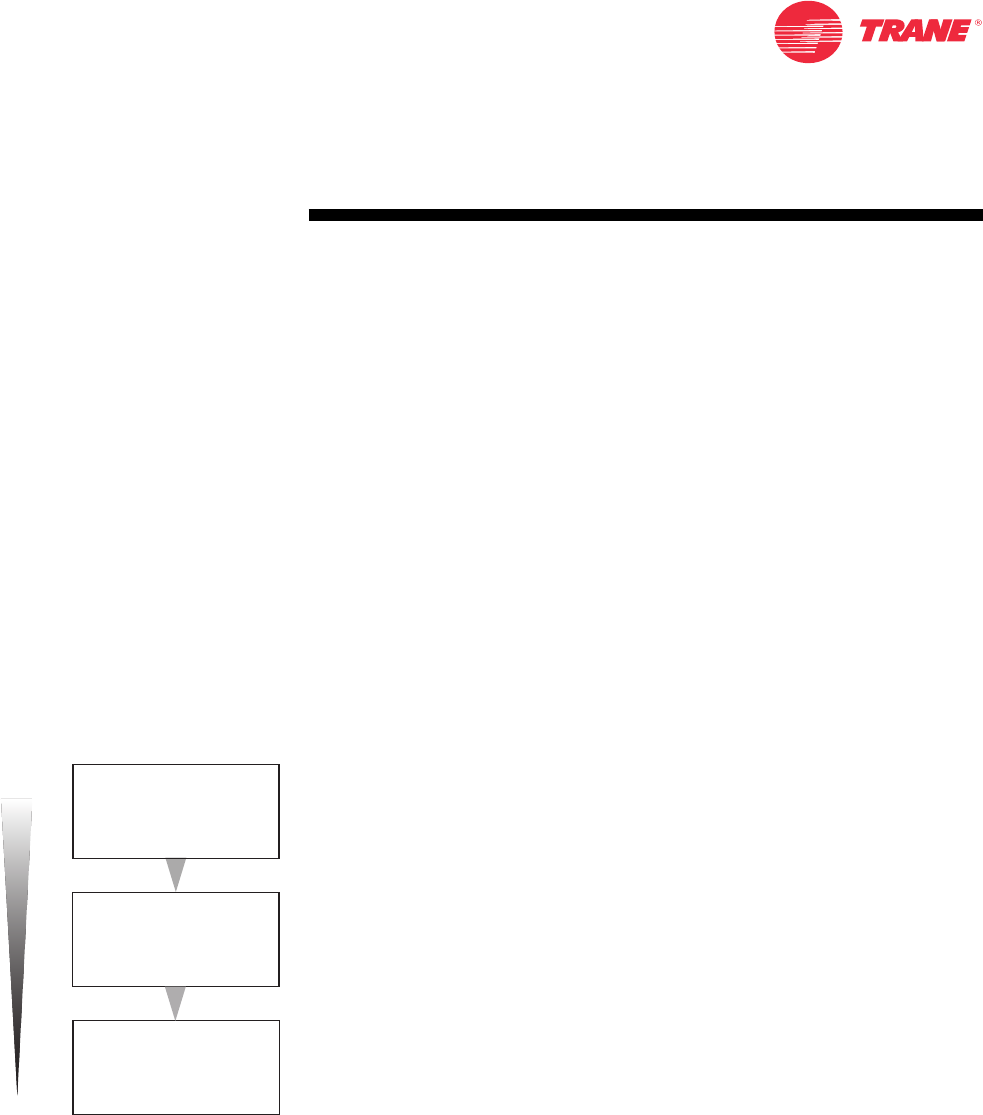
VAV-PRC003-EN 13
Application
Considerations
Introduction
The VariTrac system is a changeover-
bypass VAV system. One fan supplies
either warm air for heating or cool air
for cooling. It is typically applied in
small buildings which use unitary
heating/cooling air conditioners. These
buildings need the simplicity and low
cost of unitary equipment, but more
than one comfort control zone (one
zone temperature sensor) for each air
conditioner.
When is VariTrac a good HVAC system
choice? To help answer this question,
several important application concepts
and considerations are discussed
below.
Zoning Considerations
Consider the following two questions
when evaluating your HVAC system
design:
Will the building occupants be
comfortable?
A system designed
with a single-zone HVAC unit and one
zone sensor provides comfort to
occupants near the zone sensor.
However, occupants in perimeter areas
or interior rooms may be too hot or too
cold.
Will comfort be consistent from
room to room and area by area?
A
building is normally divided into
thermal zones for increased comfort
control and energy savings. Each
thermal zone should have a dedicated
HVAC unit. For optimum comfort, each
thermal zone should be further divided
into comfort zones.
Choosing the number and location of
thermal and comfort zones is critical in
planning an effective system. Some
things to consider in the design
process include:
• Geographic location
• Orientation of the building to the sun
• Prevailing winds
• Wall construction (glass, insulation,
building materials)
• Building layout, design, occupancy and
occupancy pattern throughout the day
and year
• Activities in each zone
Zoned unitary systems, such as
changeover-bypass VAV, divide thermal
zones into smaller comfort zones. Each
comfort zone has a damper and zone
sensor that controls the amount of
heated or cooled air delivered to the
zone. A central system controller
monitors the status of each zone
damper and zone sensor. The controller
then makes the decision to heat or cool
for the HVAC unit.
Individual comfort zones served by a
common HVAC unit (part of the same
thermal zone) can require heating and
cooling at the same time. In a
changeover-bypass VAV system, the
unit alternately provides warm and cool
air in an attempt to satisfy the needs of
all comfort zones. This is effective if the
simultaneous calls for heating and
cooling exist for short time periods
only. Wide temperature variations may
occur if some comfort zones need
heating for extended periods of time
while others need cooling.
Some comfort zones require special
consideration because of their use or
location. An example is the foyer or
reception area of an office building.
These areas often have wide variations
in thermal load because of glass
(relative to other areas of the building)
and frequently-opened exterior doors.
Another example is an interior storage
room with the need for ventilation but
little or no heating or cooling. These
zones can significantly influence
efficient operation and comfort levels
throughout the building.
Preferably, areas such as these are
designed as separate thermal zones
with dedicated HVAC units. However,
this may be impractical or costly.
Instead, use fan-powered variable-
volume terminal units, or units with
local reheat.
Figure 16. System design affects
occupancy comfort
Single Zone Building
One thermal and
one comfort zone
Thermal Zoned Building
Multiple thermal zones
each with one
comfort zone
Thermal and
Comfort Zoned Building
Multiple thermal zones
each with multiple
comfort zones
Least
Most
Energy Savings • Comfort • Flexibility



